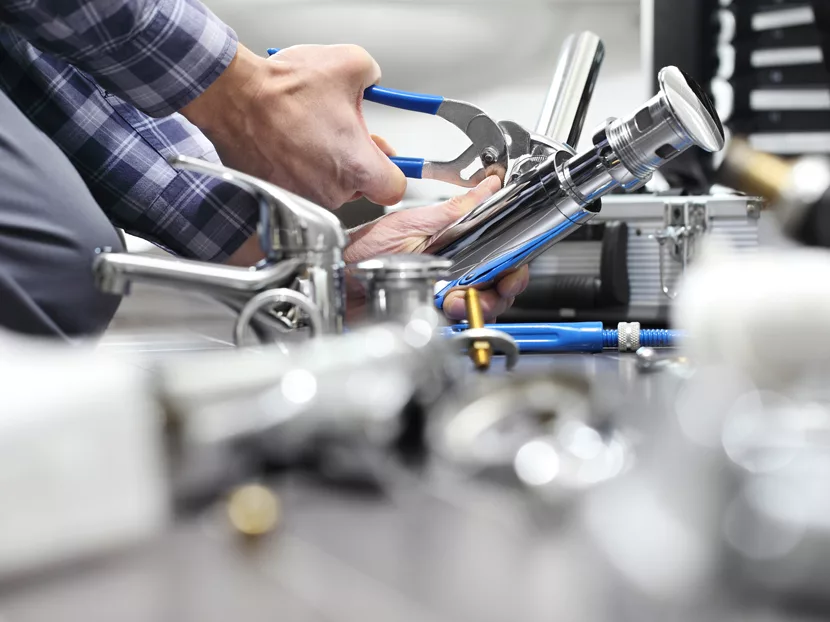Have you ever wondered if you were charging the right amount for your services? Of course, you have. It’s only natural. Unfortunately, many contractors set their prices based on the amount charged by their competitors. The problem with this method is their competitors may have set their rates based on the incorrect prices of their competitors.
In which case, everybody’s prices would be set based on flawed information. And that can only lead to wrong numbers producing wrong results. You copying their price structure will have you traveling on a meandering path to self-destruction.
Many of the contractors who use that method compound their problems by charging a dollar less than their competitors. The second contractor who charges a dollar less than his competition starts down the road leading to the slippery slope. The next contractor, who charges a dollar less than the second contractor, leads to the fourth contractor charging a dollar less than the third contractor. This process can only lead to contractors paying consumers for the privilege of addressing consumer requests.
You might say they would never do that. However, since contractors have only three choices regarding their prices — sell at, below or above their actual cost — those who do not know their true operational cost are likely to sell their services below their actual cost. They are at least partially paying for the privilege of serving the public.
Those who sell at their true cost are running around in circles. And those who are selling above their actual cost but not maximizing their profit potential are depriving themselves, their families and employees of their just rewards.
In the United States, a quality tech and properly equipped service vehicle cost a contractor between $100 and $250/hour for labor and proportionate overhead if all available tech hours are sold all the time. That range of cost increases as fewer hours are sold. If only 90 percent of available tech hours are sold, the range becomes between $111.11 and $277.78/tech hour. Sell less than 90 percent and the range further increases.
Why then do so many PHC contractors sell their services at prices that cannot possibly get them where they want to go? Answer: They do not know their true operational cost and fear losing work if they charge what they should to accomplish their goals. I think it would be much wiser to be concerned about the money they cost themselves by charging flawed prices that cannot allow them to recover their actual cost and earn a proper profit above it.
Workmanship and professionalism
On a scale of 1 to 10, with 1 being the worst and 10 being the best, answer this question: Where do you place yourself regarding the quality of workmanship and professionalism you deliver to consumers?
If you charge a $1 less per hour than the contractors who are 1s on the scale, you are saying you are not as good as the worst. If you consider yourself to modestly be an 8, why wouldn’t you charge more than the 7s, 6s, 5s, etc.? After all, you would be delivering more value to the consumer.
Becoming a licensed PHC contractor took you a good deal of preparatory training, work and time. Many jurisdictions require at least five years of learning experience before allowing you to apply for a license.
That’s a lot of time; especially when you compare it to the eight weeks of clown college needed to learn how to become a clown. You know, those entertaining souls who don colorful clothes, oversized floppy shoes, wigs and makeup as they juggle various items, create balloon animals and squirt water in your face from their lapel flowers.
As I thought about the flawed fees so many PHC contractors charge for providing potable water, proper drainage, warmth in the cold of winter and comfort in the sizzling summer, I wondered about the fees charged by clowns for entertaining at children’s birthday parties. It seems that an inexpensive clown with minimal experience charges between $100 and $165/hour. Experienced clowns charge between $225 and $400/hour.
Do you see where I’m going? If it takes five years to become a journeyman plumber or heating and cooling tech, 260 weeks would be spent in training. The eight weeks it takes to become a clown at a clown college is only 3 percent (8 ÷ 260 = 3 percent) of the time it takes to become a qualified journeyman plumber or heating and cooling tech. Yet, clowns charge more money than a good many PHC contractors charge.
To add insult to injury, clowns neither have anywhere near the overhead costs that contractors have to properly equip and maintain a service vehicle nor all the other mandatory requirements placed on PHC contractors by governmental mandate and proper business management.
Overhead Expenses
Clowns charge for their travel time. Do you? In a close traveling radius, a clown can do at least three two-hour jobs in an eight-hour day. The other two hours are spent traveling between jobs, having lunch, etc. Since the clown charges for travel, he can bring in seven hours of pay in an eight-hour workday. Figure 1 shows revenue brought in for that day at incremental hourly rates starting at $100, since that is the least an inexperienced clown charges and ending at $400 for an experienced top-notch clown.
Overhead expenses (all operational costs other than the clown’s salary) must be subtracted from those numbers to arrive at what the clown brings in to cover clown salary, salary expenses and taxes.
Keep in mind that the clown does not have anywhere near the overhead costs you, the PHC contractor, incur. The clown’s necessary vehicle costs less to purchase and maintain than a properly equipped and stocked service van or truck. The ancillary vehicular expenses also are less. There is no need for shelving and racks. And, the clown’s car gets better gas mileage than a service van or truck.
The clown’s insurances such as workers’ compensation and liability are less. And, unlike PHC contractors, as a bonus, clowns do not have to contend with the cost associated with callbacks.
In my analytical opinion, the overhead cost to a contractor for a tech and properly equipped service vehicle in the United States is between $75 and $150/tech hour. Some kitchen table businesses may say that’s impossible, but if they correctly identified and calculated their true cost, they would realize that their pared-down spartan expenses are at least $40 to $50/tech hour.
Using the same numbers in Figure 1, Figure 2 indicates the money a clown has left after overhead expenses to pay clown salaries, related clown salary expenses and taxes, if there is a profit, compared with the money the PHC contractor has after overhead expenses to pay tech salaries, related tech salary expenses and taxes, if there is a profit. The red numbers indicate expenses. The numbers in the green background indicate the money left after overhead expenses
As you can see, in every instance, clowns bring in more money per 7 hours charged after overhead expenses than PHC service contractors, who do not correctly identify and calculate their exact cost so they can develop properly profitable selling prices. In one instance, the contractor only breaks even while in another, he loses money.
The money allocated in the green background is the amount the contractor has to pay tech salaries, tech salary-related expenses (such as FICA matching funds, insurance related to payroll, unemployment and disability insurance, and, if any, health and retirement funds). Then, if there is any money remaining, the contractor makes a profit. If not, the contractor either breaks-even or takes a loss.
Although the examples are based on selling 7 hours a day, the cost to the clown or contractor is really for 8-hour days since that is the norm. The other hour is for nonrevenue-producing time.
Using the first line where the rate is $100/hour, the clown brings in $78.75/hour. ($630 ÷ 8-hour day) to cover salary, salary-related expenses and profit. In comparison, the PHC contractor brings in either $52.50 at $40/hour overhead cost ($420 ÷ 8-hour workday) or $21.88 at $75/hour overhead cost ($175 ÷ 8-hour workday) or the contractor loses $43.75 per hour at the $150/hour overhead cost ($350 loss ÷ 8-hour workday).
If you are charging less than what clowns charge or have less money after overhead expenses than clowns have, you should seriously consider changing professions and becoming a clown since you are already acting in a silly manner. It won’t take long — just eight weeks of clown college.
You won’t have to be concerned with licensing boards, codes, building inspectors, warranting jobs, after-hours emergency calls, etc. And, as a bonus, your overhead costs will be much lower as a clown.
As a professional clown, the next time you get a call for your services, you can just send in the clowns rather than act like an amateur clown who doesn’t know his true cost and quotes prices that do not reflect the value he delivers to society and the just reward he deserves.
Of course, I’m being facetious. The PHC industry is a noble industry that protects the health of the nation. Think about it. Without potable water and proper drainage of wastes, diseases would run rampant. Without heat in the winter, many people would freeze to death. Without cooling during the dog days of summer, many people would have difficulty breathing.
Take pride in your industry. Deliver excellence to consumers. Stand behind your workmanship. Know your real cost of operation and the true cost of any service you provide. Understand that you have a right to recover your true costs and make a profit above them. Quote your prices profitably and with confidence.
If you need my assistance in figuring it out or have a comment on this writing (pro or con), give me a call, I’d like to hear from you. Keep in mind when you charge the right amount, instead of sending in the clowns, you could send in the true business professionals, deliver excellence to consumers, properly compensate your employees, pay your creditors promptly, and better reward your family and yourself.






